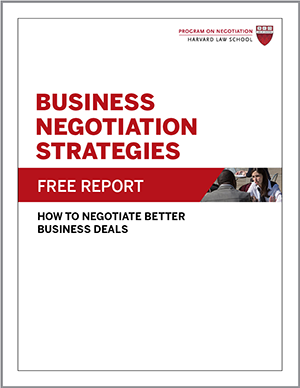
What impact do cognitive biases have on bargaining scenarios? Work by negotiation researchers Russell B. Korobkin of UCLA and Chris P. Guthrie of Vanderbilt University suggests how to turn knowledge of four specific biases into tools of persuasion at the bargaining table.
Four Specific Biases You Can Use as Tools When You Negotiate
First, they argue that by effectively anchoring the negotiation with an extreme offer, you will not only influence the negotiation but also actually change the other side’s beliefs about the nature of an appropriate agreement (see also, anchoring effect in negotiations).
Second, you can try to influence the other side’s judgments through her susceptibility to the availability bias—the tendency to rely on readily available information (see also, information asymmetry in negotiations). By carefully choosing comparisons to the current situation, you can persuade the other party about the appropriate settlement. In a legal context, when defendants can cite similar cases where a judicial award was very small, they sometimes can influence the judge’s or jury’s assessment of the value of the case.
Third, Korobkin and Guthrie suggest that when trying to reach a negotiated agreement, you should frame the negotiation in terms of potential gains for the other party, or even a win-win situation benefiting both parties. Doing so persuades the other party to become risk-averse, or reluctant to forfeit gains, and builds trust at the bargaining table; the other side will be tempted to reduce this risk and demonstrate their trust in you by reaching an agreement.
Fourth, the researchers highlight the use of contrast effects as a persuasion tool. For example, rather than making a flat offer of $30,000 to settle a case, a defendant could offer a choice among $30,000 immediately, $10,000 annually for the next three years, or a $30,000 payment to charity. When compared with the other two options, the $30,000 cash offer is likely to appear more attractive than when it is the only offer on the table. A negotiator may very well compare the options offered rather than comparing the $30,000 to the option of holding out for more money.
Overall, Korobkin and Guthrie’s ideas can help you use your knowledge of biases to influence your counterpart’s judgments at the negotiation table.
What are your favorite methods when dealing with a bias? Share your tips with our readers in the comments.
Adapted from “Knowledge of Biases as an Influence Tool,” first published in the Negotiation newsletter.
Originally published in 2014.




